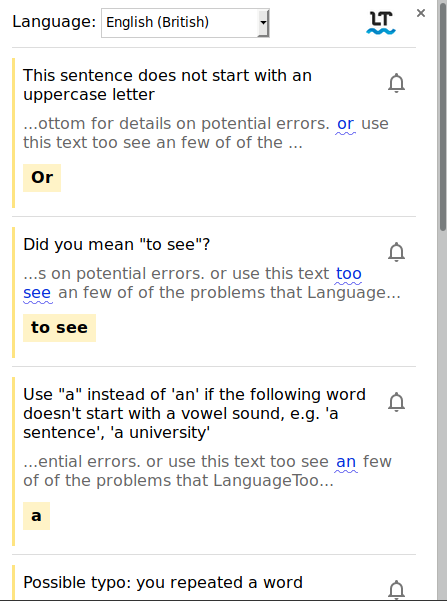 I am still waiting for someone to explain me the point of Publons, when I’m starting to get frustrated with academic bean counting. I’ve just submitted a review where I had to declare no conflict of interest, whether I want to have my review acknowledged on Publons, whether I want to have my review acknowledged on ORCID, whether I want to have my name printed in the list of reviewers in the journal, … really?
I am still waiting for someone to explain me the point of Publons, when I’m starting to get frustrated with academic bean counting. I’ve just submitted a review where I had to declare no conflict of interest, whether I want to have my review acknowledged on Publons, whether I want to have my review acknowledged on ORCID, whether I want to have my name printed in the list of reviewers in the journal, … really?
it’s called research for a reason!
 All credits to Gary King for this one. In a forthcoming piece of advice to grad students, we find this gem:
All credits to Gary King for this one. In a forthcoming piece of advice to grad students, we find this gem:
It will require rewriting, recasting your argument, reconceptualizing your theory, recollecting your evidence, remeasuring your variables, or reanalyzing your data. You’ll have to revise more than you want and you thought possible. But try not to get discouraged; they call it research, not search, for a reason!
Excellence by Nonsense
I know it’s 5 years old, but I still think this description of academia deserves a wider audience.
In this chapter, Binswanger (a critic of the current scientific process) explains how artificially staged competitions affect science and how they result in nonsense. An economist himself, Binswanger provides examples from his field and shows how impact factors and publication pressure reduce the quality of scientific publications. Some might know his work and arguments from his book ‘Sinnlose Wettbewerbe’.
Binswanger, Mathias. 2014. ‘Excellence by Nonsense: The Competition for Publications in Modern Science’. In Opening Science: The Evolving Guide on How the Internet Is Changing Research, Collaboration and Scholarly Publishing, edited by Sönke Bartling and Sascha Friesike, 49–72. New York: Springer. https://doi.org/10.1007/978-3-319-00026-8_3. [open access]
SciFlow for Collaborative Writing
There are a few solutions out there for collaborative writing, and currently I like SciFlow best. The thing about collaborative writing platforms is that while there are many options out there, we’ll have to consider the least technical of the co-authors. Yes, we could use LaTeX (or perhaps better: Markdown because most journals want Word documents during submission) on GitHub, but in the social sciences this is often no realistic because many shy away from anything that doesn’t quite look like a word processor.
I guess a widely approach consists of a Word document that is either e-mailed around, or these days shared on Dropbox. It’s not too bad as long as one of the authors knows how to combine different versions of the same document, tracked changes are accepted from time to time, and someone is willing to clean up the messed-up formatting in the end.
In terms of collaboration, an online platform can be better: there is only one version — the latest one –, and all authors can write on the document at once. SciFlow offers a basic service for just this, and the “basic” part makes it just so suitable: the least technical of the co-authors is likely to handle it well. It offers all the necessary bits without distracting from the most important bit: writing.
It handles basic formatting, footnotes, references, figures, and equations. We are forced to use styles rather than direct formatting — something we should be doing in Word, too, but the least technical of the co-authors typically doesn’t do. Citations are built in (though not quite as nicely as in Authorea, where we can import references from the web, too!), and there are many templates to format the document and export it to PDF or Word documents as needed.
Grammar Check in SciFlow
I have mentioned SciFlow, an exciting platform for collaborative academic writing. Wouldn’t it be nice to have a grammar checker? Head over to LanguageTool and install the bowser add-on of choice. Once you’ve done that, you can check any text in SciFlow (or anywhere on the web where you type):
Here we have a red wiggly line from the browser, indicating a typo. How about potential grammar problems? Click on that small blue circle at the end, and let LanguageTool do its magic.
(Here I used part of the demo text from LanguageTool, so obviously they have smuggled in many issues.) One thing I found less convenient is that when I simply click on the blue circle, the entire document is checked. This tends to bring up many potential issues, especially since author names are typically not in the dictionary. As a result, I find it difficult to be sure which section of the document an error refers to. The workaround is to select a paragraph (or section) a time, and then click that blue circle. Now we only have the selected text checked.
If you are uncomfortable having your text sent over the web (see their privacy rules here), you can install LanguageTool locally, and have the browser add-on use that one instead.



